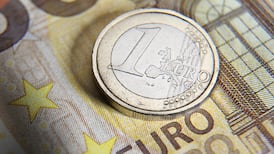A report published with the “spring statement” carries an assessment of the risks facing Ireland’s economy as the recovery gains pace. In respect of interest rates, now at a record low, it draws rather stark conclusions as to what might happen here in the event of a reasonably large rate hike.
True, the European Central Bank is unlikely to increase rates any time soon. Its quantitative easing programme is set to run until September 2016 at the earliest. Even if the ECB stopped buying bonds at that point because the euro zone economy was shaking off its slumber, it would be unlikely to raise rates immediately.
At some future point, however, rates will rise. This is inevitable, but we simply don’t know when. Given the very heavy level of public and private indebtedness in Ireland, such a move could herald trouble.
The danger is spelled out quite clearly in the “stability programme update” report, a formal fiscal review which the Government is obliged to send to Brussels at this time of year every year.The assessment set out in this report, indeed, forms the core of the spring statement. So what does it say about interest rates?
At issue is a “sensitivity analysis” which examines how key budget variables – in respect of revenue, expenditure, deficits and debt – would respond to changed economic forces in the outside world or the in the domestic setting.
For example, the analysis suggests Ireland’s gross domestic product would be 0.9 per cent higher than it would otherwise be next year, if global economic output increased by 1 per cent above the current International Monetary Fund forecast. A contraction of similar scale in Ireland would be in prospect if global output came in 1 per cent below the current IMF forecast.
The point is clear: Ireland grows if the world grows – and vice versa.
As regards interest rates, the situation is equally clear. Rates down: good. Rates up: bad. Quite how bad can be seen in the report.
It is as well to point out first that this is a serious piece of work, based on simulations using the ESRI’s Hermes model. Observe too that the Government’s basic assumption is that the main ECB rate, which at present is as close to zero as makes no difference, will not change over the forecast horizon.
Sensitivity analysis
Still, the sensitivity analysis finds that Irish GDP would be 2.1 per cent lower in 2017 if the main ECB rate rose by one percentage point to 1 per cent. A 1 per cent ECB rate would still be low by historic standards.
The impact of a 1 per cent increase in rates from current levels would peak at a 2.4 per cent hit to GDP in 2018 or 2019, according to the analysis.
In the scheme of things, these are pretty big figures. Any contraction of that order would be linked to an erosion of tax revenue, an increase in public expenditure and a widening of the deficit .
“While unlikely in the short term, higher policy-induced interest rates would have a dampening impact on Ireland’s economic activity,” says the stability programme update.
“Simulations suggest that a one percentage point increase in policy interest rates could reduce the level of GDP by almost 2½ percentage points by 2020.
“This effect is especially pronounced given the large debt overhang. Such a deterioration in the economy would add almost one percentage point to the budget deficit by 2020.”
Even though the outlook for rates in the next couple of years is stable, all of this points to potential for disruption within the Irish economy whenever the rate cycle does eventually turn.
In sum, rate increases suck money from the economy – and all the more so when debt levels are high. While banks are notably reluctant to pass on rate cuts to mortgage customers, they would not delay passing on rate increases to the same cohort.
There is more. The super-low ECB rate is but one of the three benign – and variable – forces now at work in the Irish economy. The others are: the euro's weakness vis-à-vis sterling and the dollar, which helps exporters; and the low price of oil, well down this year and a spur to consumers and firms.
For as long as all that lasts, it’s all for the good. But variable means variable. The ECB might not rush to raise rates whenever the turning point eventually comes, yet those rates are abnormally low right now.
The restoration of anything approaching normal service would present a challenge. Be warned.













